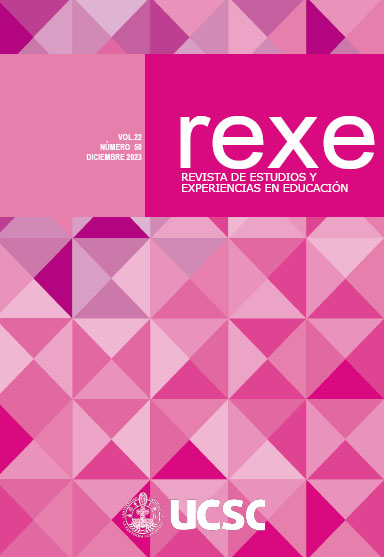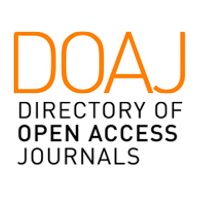Teacher turnover and attrition in Chile: Why is it important and how to prevent and/or mitigate it?
DOI:
https://doi.org/10.21703/rexe.v22i50.1395Keywords:
Educación, Profesores, Política educativa, Investigación, ChileAbstract
The national research on teacher turnover and attrition is promising, but it is outdated because it still does not cover the changes in the working conditions implemented by the National Teacher Policy in 2017. In this context, this essay examines the importance of updating the turnover and attrition estimates in the country and systematize the main public policy proposals to prevent and/or mitigate it. Considering the national and international evidence, the thesis developed defends five reasons that explain its relevance and five public policy recommendations. Thus, it highlights, on the one hand, not only the National Teacher Policy, but also school efficiency, financial cost, educational equity and the teacher shortage and, on the other hand, the reconceptualization of the decision to rotate and/or drop out, the different profiles of teachers, working conditions not yet covered by the National Teaching Policy, the differentiated roles that the government, the school and the intermediate level should have, and the incentive for the research agenda. The conclusions make an invitation to strengthen a coordinated and comprehensive approach to the complex phenomenon of teacher turnover and attrition, especially after the sociopolitical and health crisis that Chile is experiencing, not only in terms of the National Teacher Policy, but also of the New Education Public Law and the COVID-19 pandemic.
Downloads
References
Ávalos, B., y Valenzuela, J. P. (2016). Education for all and attrition/retention of new teachers: A trajectory study in Chile. International Journal of Educational Development, 49, 279-290. https://doi.org/10.1016/j.ijedudev.2016.03.012
Bellei, C., Muñoz, G., Rubio, X., Alcaino, M., Donoso, M. P., Martínez, J., de la Fuente, L., del Pozo, F., y Díaz, R. (2018). Nueva Educación Pública: Contexto, contenidos y perspectivas de la desmunicipalización. Universidad de Chile.
Borman, G., y Dowling, N. (2008). Teacher attrition and retention: A meta-analytic and narrative review of research. Review of Educational Research, 78(3), 367–409. http://dx.doi.org/10.3102/0034654308321455
Buchanan, J., Prescott, A., Schuck, S., Aubusson, P., Burke, P., y Louviere, J. (2013). Teacher retention and attrition: Views of early career teachers. Australian Journal of Teacher Education, 38(3), 112–129. http://dx.doi.org/10.14221/ajte.2013v38n3.9
Camelo, R., y Ponczek, V. (2021). Teacher turnover and financial incentives in underprivileged schools: Evidence from a compensation policy in a developing country. Economics of Education Review, 80, 102067. https://doi.org/10.1016/j.econedurev.2020.102067
Carrasco, D., y Banerjee, R (2015). Teacher turnover intentions: Contextual effects and school climate predictors among secondary school teachers in Chile. En D. Carrasco (ed.), Multivariate approaches to school climate factors and school outcomes (pp. 120-148). [Tesis doctoral, University of Sussex]. http://sro.sussex.ac.uk/id/eprint/61527/1/Ogaz,%20Diego%20Alonso%20Carrasco.pdf
Carrasco, D., y Banerjee, R. (2016). Predicting teacher turnover from public schools in Chile, beyond socioeconomic status. En D. Carrasco (ed.), Multivariate approaches to school climate factors and school outcomes (pp. 74-119). [Tesis doctoral, University of Sussex]. http://sro.sussex.ac.uk/id/eprint/61527/1/Ogaz,%20Diego%20Alonso%20Carrasco.pdf
Carrasco, D., Godoy, M. I., y Rivera, M. (2017). Rotación de profesores en Chile. Quienes son y cuales es el contexto de quienes dejan su primer trabajo. Midevidencias, 11, 1-7.
Carrasco, D., Manzi, J., y Treviño, E. (2018). Trayectorias laborales de los docentes: ¿dónde, cuándo y bajo qué condiciones dejan su primer trabajo? Temas de la Agenda Pública, 13(105), 1-20.
Carver-Thomas, D., y Darling-Hammond, L. (2017). Teacher turnover. Why it matters and what we can do about it. Learning Policy Institute.
Clotfelter, C., Glennie, E., Ladd, H., y Vigdor, J. (2008). Would higher salaries keep teachers in high-poverty schools? Evidence from a policy intervention in North Carolina. Journal of Public Economics, 92(5–6), 1352–1370. https://doi.org/10.1016/j.jpubeco.2007.07.003
Cochran-Smith, M., McQuillan, P., Mitchell, K., Terrell, D. G., Barnatt, J., D’ Souza, L., Jong, C., Shakman, K., Lam, K., y Gleeson, A. M. (2012). A longitudinal study of teaching practice and early career decisions: A cautionary tale. American Educational Research Journal, 49(5), 844–880. https://doi.org/10.3102/0002831211431006
DeAngelis, K., y Presley, J. (2007). Leaving schools or leaving the profession: setting Illinois’ record straight on new teacher attrition. Illinois Education Research Council.
Díaz, A. (2021). Comenzar y permanecer. Narrativas de dos docentes de escuelas con alto índice de vulnerabilidad. Estudios Pedagógicos, 47(1), 27-46. https://doi.org/10.4067/S0718-07052021000100027
Díaz, A., López, D., Salas, M. y Carrasco, D. (2021). Movilidad de profesores chilenos. Influencia de variables demográficas, características del establecimiento escolar y condiciones laborales. Perfiles Educativos, 43(172), 42-59. https://doi.org/10.22201/iisue.24486167e.2021.172.59514
Diliberti, M. K., Schwartz, H. y Grant, D. (2021). Stress topped the reasons why public-school teachers quit, even before COVID-19. Rand Corporation.
Donaldson, M., y Johnson, S. M. (2015). Teach for America teachers: How long do they teach? Why do they leave? Kappa Magazine, 93(2), 47-51. https://doi.org/10.1177/003172171109300211
Dupriez, V., Delvaux, B., y Lothaire, S. (2015). Teacher shortages and attrition: Why do they leave? British Educational Research Journal, 42(1), 21-39. https://doi.org/10.1002/berj.3193
Elige Educar (2021). Análisis y proyección de la dotación docente en Chile. Elige Educar.
Fuenzalida, D., Ávalos, B., Valenzuela, J. P., y Acuña, F. (21-22 de agosto de 2014). Trayectorias docentes: Ejercicio profesional y abandono. Congreso Interdisciplinario de Investigación en Educación. Santiago, Chile.
Gaete, A., Castro, M., Pino, F., y Mansilla, F. (2017). Abandono de la profesión docente en Chile: motivos para irse del aula y condiciones para volver. Estudios Pedagógicos, 43(1), 123-138. http://dx.doi.org/10.4067/S0718-07052017000100008
Gaikhorst, L., Beishuizen, J., Roosenboom, B., y Volman, M. (2017). The challenges of beginning teachers in urban primary schools. European Journal of Teacher Education, 40(1), 46–61. https://doi.org/10.1080/02619768.2016.1251900
Guarino, C. M., Santibanez, L., y Daley, G. A. (2006). Teacher recruitment and retention: A review of the recent empirical literature. Review of Educational Research, 76, 173–208. https://doi.org/10.3102/00346543076002173
Ingersoll, R. M. (2001). Teacher turnover and teacher shortages: An organizational analysis. American Education Research Journal, 38, 499–534. http://dx.doi.org/10.3102/00028312038003499
Ingersoll, R. M. (2003). Is there really a teacher shortage? Center for the Study of Teaching and Policy, University of Washington.
Ingersoll, R. M., y May, H. (2010). The magnitude, destinations and determinants of mathematics and science teacher turnover. Consortium for Policy Research in Education, University of Pennsylvania.
Ingersoll, R. M., Merrill, E., Stuckey, D., Collins, G., y Harrison, B. (2021). The demographic transformation of the teaching force in the United States. Education Sciences. 11, 234. https://doi.org/10.3390/educsci11050234
Johnson, S. M. (2006). The workplace matters. Teacher quality, retention, and effectiveness. National Education Association [NEA].
Johnson, S. M., Kraft, M., y Papay, J. P. (2012). How context matters in high-need schools: The effects of teachers’ working conditions on their professional satisfaction and their students’ achievement. Teachers College Record, 114(10), 1–39. https://doi.org/10.1177/016146811211401004
Johnson, S. M., Reinhorn, S., Charner-Laird, M., Kraft, M., Ng, M., y Papay, J. P. (2014). Ready to lead, but how? Teachers’ experiences in high-poverty urban schools. Teachers College Record, 116(10), 1–50. https://doi.org/10.1177/016146811411601005
Kraft, M., Donaldson, M., y Simon, N. (2021). Teacher retention in public schools. A review of the research. Upbeat.
Kraft, M., Marinell, W. H. y Yee, D. (2016). School organizational contexts, teacher turnover, and student achievement: Evidence from panel data. American Educational Research Journal, 53(5), 1411–1499. https://doi.org/10.3102/0002831216667478
Kraft, M., Simon, N., y Lyon, M. (2020). Sustaining a sense of success: The importance of teacher working conditions during the COVID-19 pandemic. Annenberg Institute, Brown University.
Lindqvist, P., Nordänger, U. K., y Carlsson, R. (2014). Teacher attrition the first five years: a multifaceted image. Teaching and Teacher Education, 40, 94–103. http://dx.doi.org/10.1016/j.tate.2014.02.005
Loeb, S., Darling-Hammond, L., y Luczak, J. (2005). How teaching conditions predict teacher turnover in California schools. Peabody Journal of Education, 80(3), 44–70. https://doi.org/10.1207/s15327930pje8003_4
López, I. (2015). Retiro temprano de profesores del sistema educativo de Chile [Tesis para optar a magíster en economía, Universidad de Chile]. https://repositorio.uchile.cl/handle/2250/137123
Marinell, W. H., y Coca, V. M. (2013). Who stays and who leaves? Findings from a three-part study of teacher turnover in NYC middle schools. Research Alliance for NYC Schools.
Miller, L. (2020). 2019 Virginia Working Conditions Survey. Descriptive analysis of statewide patterns. School of Education and Human Development Frank Batten School of Leadership and Public Policy, University of Virginia.
Ministerio de Educación [MINEDUC]. (2017). Aportes a la reflexión sobre movilidad y abandono docente 2013-2014. Ministerio de Educación [MINEDUC].
Orrego, V. (2021). Agenda institucional de la enseñanza media técnico-profesional en Chile, 2009-2018. Revista Educación, Política y Sociedad, 6(1), 123-148. https://doi.org/10.15366/reps2021.6.1.005
Podolsky, A., Kini, T., Darling-Hammond, L., y Bishop, J. (2019). Strategies for attracting and retaining educators: What does the evidence say? Education Policy Analysis Archives, 27(38). http://dx.doi.org/10.14507/epaa.27.3722
Quartz, K. H., Thomas, A., Anderson, L., Masyn, K., Lyons, K. B., y Olsen, B. (2008). Careers in motion: A longitudinal retention study of role changing among early career urban educators. Teachers College Record, 110(1), 218–250. https://doi.org/10.1177/016146810811000102
Redding, C.H. (2017). Explaining the effects of teacher turnover on student achievement. En C. H. Redding (ed.) (2017). The determinants and consequences of within-year teacher turnover (pp. 121-164) [Tesis doctoral. Vanderbilt University]. https://ir.vanderbilt.edu/handle/1803/11543
Rivero, M.R. (2015). The link of teacher career paths on the distribution of high-qualified teachers: a Chilean case study. Archivos Analíticos de Políticas Educativas, 23(73), 1-32. https://doi.org/10.14507/epaa.v23.1710
Ronfeldt, M., Loeb, S., y Wyckoff, J. (2013). How teacher turnover harms student achievement. American Educational Research Journal, 50(1), 4–36. https://doi.org/10.3102/0002831212463813
Rubenstein, A. L., Eberly, M. B., Lee, T. W., y Mitchell, T. R. (2018). Surveying the forest: A meta-analysis, moderator investigation, and future-oriented discussion of the antecedents of voluntary employee turnover. Personnel Psychology, 71(1), 23–65. https://doi.org/10.1111/peps.12226
Ryu, S., y Jinnai, Y. (2021). Effects of monetary incentives on teacher turnover: A longitudinal analysis. Public Personnel Management, 50(2) 205-231. https://doi.org/10.1177/0091026020921414
Schaeffer, L., Long, J. S., y Clandinin, J. (2012). Questioning the research on early career teacher attrition and retention. Alberta Journal of Educational Research, 58(1), 106–121. https://doi.org/10.11575/ajer.v58i1.55559
See, B. H., y Gorard, S. (2020). Why don’t we have enough teachers? A reconsideration of the available evidence. Research Papers in Education, 35, 416–442. https://doi.org/10.1080/02671522.2019.1568535
See, B. H., Morris, M. Gorard, S., Kokotsaki, D., y Abdi, S. (2020). Teacher recruitment and retention: A critical review of international evidence of most promising interventions. Education Science, 10, 262, https://doi.org/10.3390/educsci10100262
Simon, N. S., y Johnson, S. M. (2015). Teacher turnover in high poverty schools: What we know and can do. Teachers College Record, 117(3), 1–36. https://doi.org/10.1177/016146811511700305
Sims, S., y Jerrim, J. (2020). TALIS 2018. Teacher working conditions, turnover and attrition. Department of Education.
Strunk, K. O., y Robinson, J. P. (2006) Oh, won’t you stay: A multilevel analysis of the difficulties in retaining qualified teachers. Peabody Journal of Education, 81(4), 65–94. https://doi.org/10.1207/s15327930pje8104_4
Struyven, K., y Vanthournout, G. (2014). Teachers’ exit decisions: An investigation into the reasons why newly qualified teachers fail to enter the teaching profession or why those who do enter do not continue teaching. Teaching and Teacher Education, 43, 37–45. https://doi.org/10.1016/j.tate.2014.06.002
Synar, E., y Maiden, J. (2012). A comprehensive model for estimating the financial impact of teacher turnover. Journal of Education Finance, 38(2), 130-144.
Valenzuela, J. P., y Sevilla, S. (2013). La movilidad de los nuevos profesores chilenos en la década del 2000: un sistema escolar viviendo en peligro. Proyecto N° 1120740. Fondo Nacional de la Ciencia y Tecnología [FONDECYT], Ministerio de Educación [MINEDUC].
Valenzuela, J. P., López, I. y Sevilla, A. (2021). La movilidad de los nuevos profesores chilenos en la última década: Aprendizajes para mejores políticas públicas. Centro de Investigación Avanzada en Educación [CIAE].
Watlington, E., Shockley, R., Guglielmino, P., y Felsher, R. (2010). The high cost of leaving: An analysis of the cost of teacher turnover. Journal of Education Finance, 36(1), 22-37. https://doi.org/10.1353/jef.0.0028
Weston, D., Hindley, B., y Cunningham, M. (2021). Working paper: A culture of improvement Reviewing the research on teacher working conditions. Teacher Development Trust.
Williams, S., Swain, W., y Graham, J. (2021). Race, climate, and turnover: An examination of the teacher labor market in rural Georgia. AERA Open, 7(1), 1-23. https://doi.org/10.1177/2332858421995514
Downloads
Published
Issue
Section
License
Copyright (c) 2023 Vanessa Orrego-Tapia

This work is licensed under a Creative Commons Attribution 4.0 International License.
Open Access Policy
This journal provides immediate open access to its content, based on the principle that offering the public free access to research fosters greater global knowledge exchange.
License
The REXE Journal, “Journal of Studies and Experiences in Education,” published by the Faculty of Education at the Universidad Católica de la Santísima Concepción, is distributed under a License. Creative Commons Atribución 4.0 Internacional.






